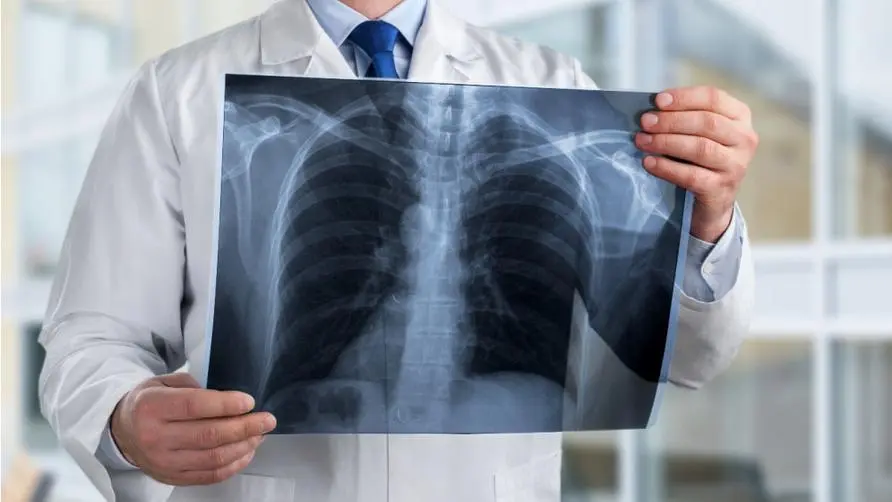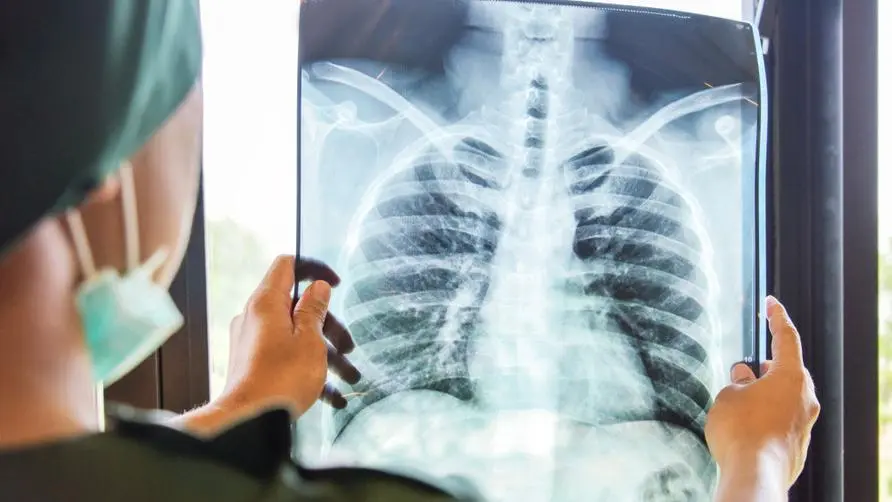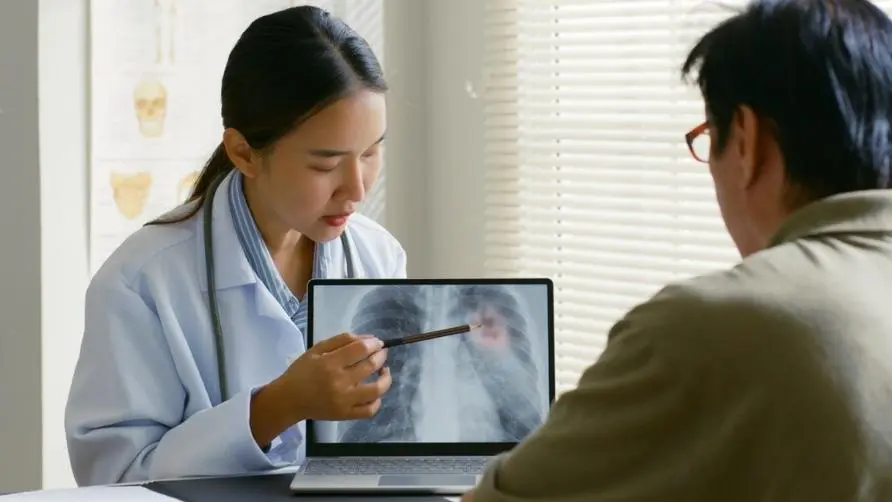Lung cancer ranks first among the top ten cancers. She is a non-smoker and has a 2-centimeter tumor with no symptoms! Doctors reveal differences in lung cancer risk and prognosis

Lung cancer cases exceed 16,000, ranking first among the top ten cancers! Lung cancer causes and risk factors?
The latest cancer registration report of the Ministry of Health and Welfare in 2021 was announced. The number of new cancers among Taiwanese people was 121,762. Among them, “lung cancer” surpassed colorectal cancer for the first time and became the first among the top ten cancers. The number of cases reached 16,880, and it was even more common among men and women. The second most common cause of cancer. In the past, lung cancer occurred in late stages, resulting in high mortality and low survival rates. Early-stage lung cancer had few symptoms. If it progresses to stage 4 and requires medical treatment, the 5-year survival rate may be only 10%.
Dr. Ke Haowen, chairman of the Taiwan Lung Cancer Society, pointed out in an exclusive interview with “Biomedicine Times” that lung cancer can be mainly divided into lung adenocarcinoma, squamous cell carcinoma, small cell lung cancer, etc. based on pathological types. Among them, squamous cell carcinoma and small cell lung cancer are related to lung cancer. Smoking is highly related, and the occurrence of lung adenocarcinoma may be related to acquired somatic mutations (Somatic Mutation), including the most common gene mutations in Asians such as EGFR, ALK, and ROS1. In recent years, it has been found in outpatient clinics that a large number of lung cancer patients do not have smoking habits. Staying away from related risks as early as possible and receiving appropriate screening are the first principles for early detection of lung cancer.
Dr. Ke Haowen said that major risk factors for lung cancer such as radon, asbestos, smoking, second-hand smoke, oil smoke, and suspended particles in air pollution have all been linked to lung cancer. Further from the perspective of pathological classification, epidemiological statistics have found that small cell lung cancer is more than 90% related to smoking, while asbestos is mainly related to malignant mesothelioma (S malignant mesothelioma) of the pleural mesothelium. Some public health studies It has also been suggested that hair dye exposure may be associated with higher rates of lung cancer. As for lung adenocarcinoma, which currently accounts for the largest number of cases, especially in non-smoking women, the cause has not yet been found. It is still recommended to stay away from air pollution and other carcinogens in daily life, and pay attention to the air quality of the home environment.
Is small cell lung cancer too malignant to undergo surgery? What are the current treatments for lung cancer?
According to different pathological classifications of lung cancer, treatment methods and prognosis are also significantly different. Dr. Ke Haowen pointed out that small cell lung cancer accounts for about 1/5 of all lung cancers and has a clear response to chemotherapy and radiotherapy. However, small cell lung cancer relapses quickly and has a very high recurrence rate. Drug resistance often appears in 3-6 months. It has medicinal properties and neuroendocrine properties. Surgery is usually not recommended. It is the more malignant type of lung cancer. Smokers are reminded to quit smoking as early as possible to reduce the risk of small cell lung cancer. It is also helpful in reducing tongue cancer, oropharyngeal cancer, The occurrence of laryngeal cancer and breast cancer.
In the past two decades, targeted drugs targeting lung cancer gene mutations have been the representative of precision therapy. Dr. Ke Haowen explained that currently there are about 10 to 12 types of gene mutations related to lung cancer. Taking the most common EGFR gene mutation in lung adenocarcinoma as an example, Targeted drugs have progressed from the first generation to the fourth generation drugs currently under development; while ALK gene mutations have first to third generation drugs, and some are covered by health insurance. In addition, chemotherapy still plays a certain role in lung cancer. In recent years, there have been immunotherapy targeting PD-L1 immune checkpoint inhibitors, and ADC (Antibody-Drug Conjugate)“antibody-drug complex” that combines antibodies and cytotoxic drugs. When advanced treatments become available, there is a chance to improve lung cancer survival.
Lung cancer nodules 2 cm in size are asymptomatic! Lung cancer screening and early diagnosis are most important
Dr. Ke Haowen emphasized that lung cancer can be called the “silent killer”. In the past, more than 60% of lung cancer diagnoses were stage 4. When obvious symptoms such as cough and chest pain occur, it has usually progressed to the advanced stage. X-ray examinations have many blind spots and are not Screening tool for lung cancer. Currently, the most important method of screening for lung cancer is low-dose computed tomography (LDCT). The Taiwan Health Promotion Administration’s “Early Lung Cancer Detection Program” provides screening for groups with family history and smoking history. Approximately 10% of early lung cancer cases are 86%, as long as they have smoked for more than 30 years or have a family history of lung adenocarcinoma, they can accept low-dose computed tomography screening.
Dr. Ke Haowen also said that a young woman who works in a night market and has no history of smoking came to the clinic recently. A low-dose computed tomography scan revealed early stage lung cancer. The lung nodules were nearly 2 centimeters in size. She was confirmed to be a stage 1B cancer. The patient was referred to thoracic surgery for surgical resection. Once you assess yourself to have relevant risks, you can seek advice from a thoracic specialist as early as possible about appropriate screening methods.
Dr. Ke Haowen emphasized that the prevention of lung cancer should start with lifestyle habits. In particular, smoking is absolutely related to small cell lung cancer and squamous cell cancer. People with a history of smoking must quit smoking as soon as possible. In addition, you should maintain a healthy daily routine, take in balanced nutrition, maintain an appropriate amount of exercise, pay attention to air quality and stay away from carcinogens. The most important thing is to receive appropriate screening. Eligible patients can undergo low-dose computed tomography scans every two years. As long as early-stage lung cancer is discovered, tumor resection and genetic testing can be performed early to obtain a better survival rate.
Further reading:





